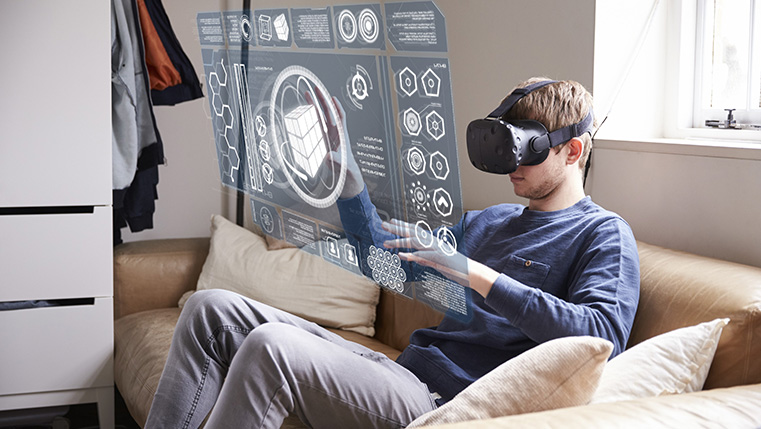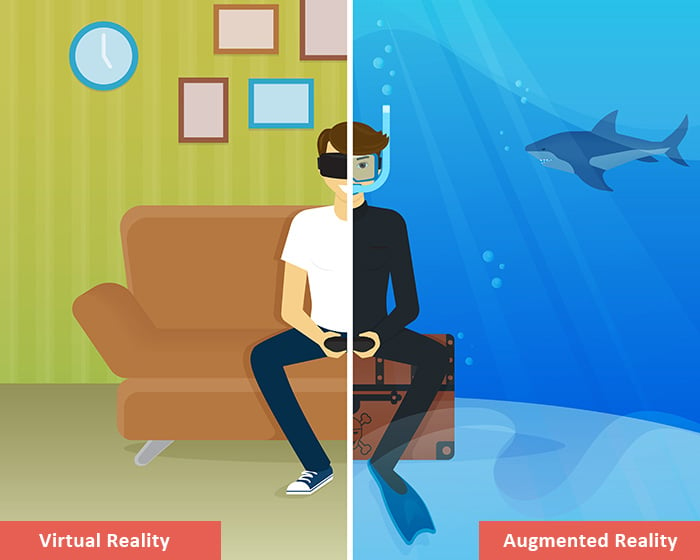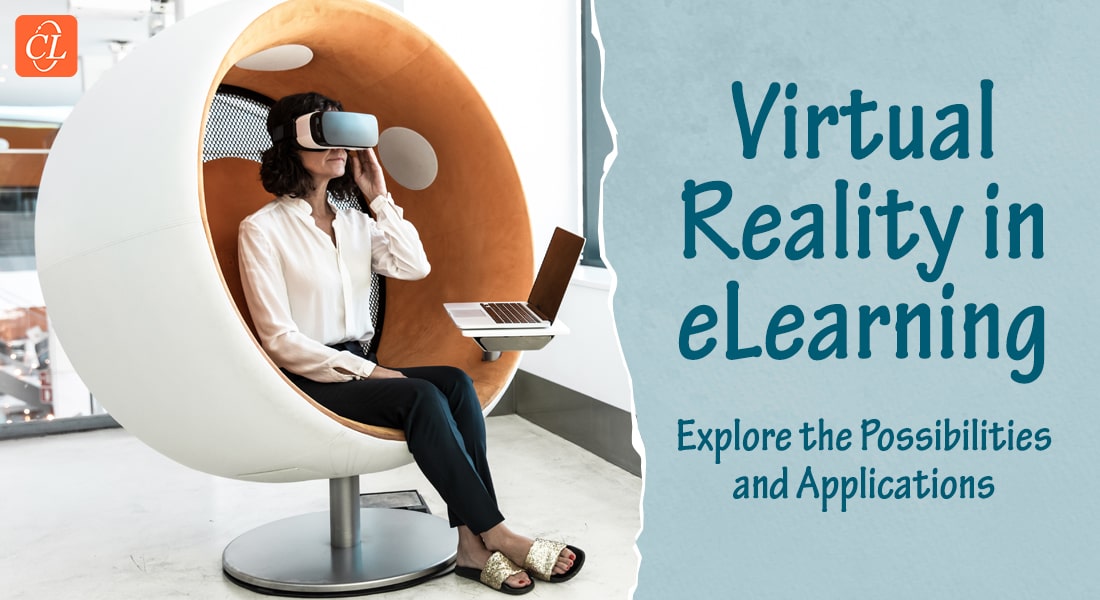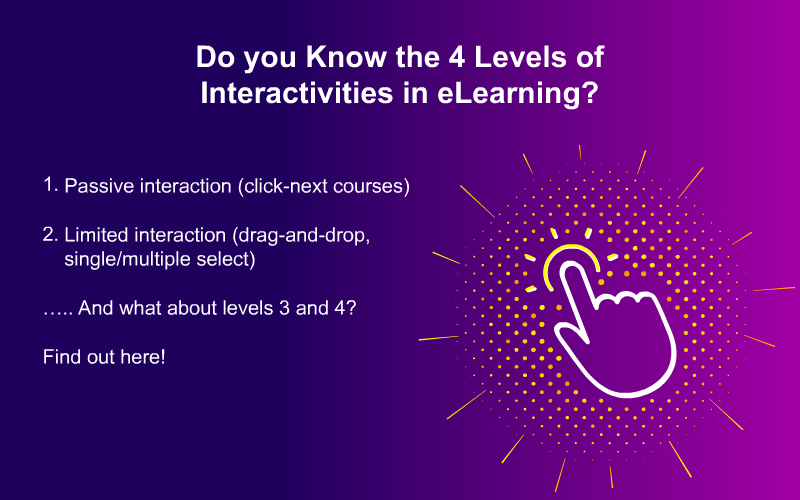AR and VR in eLearning: How Far and How Real?
Have you heard about the recent technology advancements in AR and VR? Read this blog to know five practical ways to use AR and VR in eLearning. Also know the flip sides of AR and VR.

Over the last few years, both Augmented Reality (AR) and Virtual Reality (VR) have taken strides to become one of the most sought-after consumer technologies. More so with developments in technology and wider accessibility – where we have begun to discover more ways AR and VR can potentially benefit various industries. While using AR and VR in the entertainment industry has become quite normative, there lies great potential for both AR and VR in eLearning as well.
AR and VR in eLearning
5 Practical Ways of Using AR and VR in eLearning
- Enhanced online training simulations
- Immersive gamification in eLearning courses
- Customized learning paths in web-based courses
- eLearning assessments with visual feedback
- Advanced learning analytics in online training
4 Limitations of AR and VR
- Heavy cost
- Need for dedicated learning space
- Restricted mobility
- Software and privacy issues
According to a report by Consultancy.uk, AR and VR technologies will boom to $170 billion by 2022. While AR and VR in eLearning are yet to attain their full potential, there are many ways how your organization can leverage these technologies in their online training framework. But, first and foremost, let’s find out how these two are different.
AR vs VR: What’s the Difference?
Augmented Reality (AR) and Virtual Reality have different use cases, market opportunities, and technologies; hence it’s imperative to get the differences right.
- Virtual Reality (VR) immerses the user in a replicated or imagined world (for instance, flight simulations, video games) by completely shutting the physical world, or simulates presence in real-life.
- Augmented Reality (AR) overlays or adds digital elements or imagery to a live view (for instance, snapchat lenses, the game Pokémon Go).
However, one easy way to differentiate between the two is that VR uses opaque headsets to completely immerse the learner in a virtual world whereas AR uses clear lenses so that users can still see the actual world and overlays digital elements onto it.

What are the Practical Uses of AR and VR in eLearning?
Leveraging AR and VR technologies will allow your organization to take your eLearning courses many notches higher.
5 Practical Ways of Using AR and VR in eLearning
1. Enhanced Online Training Simulations
The present simulations in online learning involve the use of either desktops/laptops or mobile devices, which leave ample scope for distractions. However, the principle behind AR and VR is to completely immerse learners in a virtual situation. Audio devices and headsets allow plugging out any external distractions and concentrating on the virtual learning activity.
For instance, use AR and VR for online compliance safety training simulations. Enable learners to step into a virtual learning environment and interact with virtual elements in real-life setups to prevent workplace accidents and injuries. You can simulate a compliance safety scenario and analyze how your learners fare in it.
2. Immersive Gamification in eLearning Courses
Gamified eLearning courses have been one of the effective ways to make learning engaging and fun. However, with AR and VR, you can provide an immersive learning experience to shape the future of gamification in the eLearning landscape.
For instance, one of the disadvantages of modern gamification is the use of virtual rewards. With AR and VR technologies, your learners can earn tangible badges and rewards as well as physically move up leaderboards. As opposed to online gamification, AR and VR allow learners to physically interact with points and badges and even hold them in their hands. And who hasn’t heard of the famous game, Pokémon Go that swept the gaming world with AR technology?
3. Customized Learning Paths in Web-based Courses
Unlike the conventional eLearning paths in your eLearning courses, AR and VR will enable learners to literally walk down a learning path and interact with the learning resources. Doing so, you will provide your learners with physical interactions like never before. Much like immersive video games where players go through different paths depending on their performance and failures.
For instance, the assessment in an eLearning course showed that your learner needs to improve on decision-making abilities. Hence, using AR and VR technologies in online training will allow the learner to choose eLearning courses and activities that center on the improvement of decision-making abilities.
4. eLearning Assessments with Visual Feedback
Talking about assessments in eLearning, VR technologies foster the use of branching scenarios, online simulations etc., to enhance evaluation. However, VR software allows recording learner performance as well as tracking the final results. How is it different? Once they complete a course, learners have the option of replaying their performance and see for themselves where they went wrong and how they fared.
For instance, if your learners miss an important step in a process, they can be showed how to perform the step correctly and retake the assessment later. All this in a much enhanced and immersive eLearning environment, leaving no room for doubts or misconceptions.
5. Advanced Learning Analytics in Online Training
Gone are the days when your LMS reports were the main source of gathering learning analytics. With AR/VR technologies in eLearning, collecting data has never been this advanced. Now you can track learners’ eye contact to gauge the learners’ interest in the training program.
Having these detailed insights will help in developing eLearning courses that gauge learner engagement with greater accuracy and utilize them to make a learner-worthy course. In turn, it leads to an enhanced learning experience that meets your learners’ expectations as well as paves way for better ROI.
These are only five of the many possibilities of incorporating AR and VR in eLearning; you can even opt for virtual walkthroughs of your workplace, interactive product demos, problem-centric scenario-based learning, and more.
However, every coin has two sides and AR and VR technologies also have a flip side. Knowing about them will help you in deciding whether these technologies are feasible enough for your organization’s unique training needs.
What Are the Limitations of AR and VR
4 Limitations of AR and VR in eLearning
1. Heavy Cost
Using AR and VR in eLearning can be expensive, considering these technologies require costly software and devices. VR headsets such as the Oculus Rift ($349) and HTC Vive ($499) cost a lot. Similarly, AR glasses such as from Vuzix Blade Smart Glasses ($1000), DreamWorld DreamGlass ($400) are no less when it comes to cost.
Additionally, AR and VR require powerful Personal Computers and MAC to run. And let’s not forget that your eLearning course will also need to be developed and designed in AR and VR format. Thereby, the course turnaround time and cost will definitely be more than a conventional eLearning course. Although the prices associated with these technologies are expected to reduce, it will still be heavy on your budget on scaling up.
2. Dedicated Learning Space
Both AR and VR require a lot of space to use with the glasses and the headsets. If you have a large number of employees to train in a limited space, it can be a huge constraint where employees might find themselves wandering toward walls or bumping into each other, unable to see their physical surroundings.
Not to forget, setting up AR and VR devices can be a task that comes with a lot of complications. Do you have ample training space that can be solely dedicated to AR and VR stations?
3. Restricted Mobility
Unlike your which can be accessed on mobiles these days, AR and VR come with the restriction of mobility. Most VR headsets are connected to desktops or laptops with long cables or wires that constraint mobility. Even with wireless headsets such as Oculus Go, learners can’t move too far.
However, headsets without cables are not far from reality. According to Nick Fajt, CEO of Against Gravity: “Over the next 12-to-24 months, we’re going to see more headsets launch without cables and without external tracking cameras.”
4. Software and Privacy Issues
As for AR and VR software, there are a lot of interoperability issues that still need to be resolved. For instance, current application designs do not allow social media integration with AR browsers.
Also, many AR and VR developers have confirmed the privacy and data security issues that are persistent in apps, putting your organization’s data at stake. To conclude, the feasibility of AR and VR technologies depends immensely on the kind of training you want to deliver in your organization.
Some subjects demand a blend of characteristics where AR and VR can fit well. Maybe if you want to train a small number of people who can attend the training in a single location and benefit from augmented and virtual reality simulations. Else, if the subjects are too risky and expensive to test in the real-world. Leveraging AR and VR in eLearning is far less expensive than incurring loss (which can be property as well as human lives) from an accident due to unfamiliarity with the physical environment.
References:
Oculus Rift
HTC Vive
Vuzix Blade Smart Glasses
DreamWorld DreamGlass





